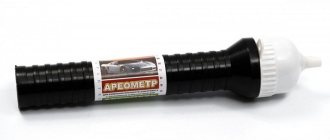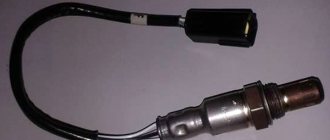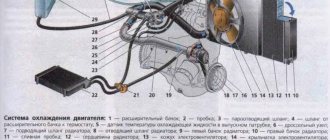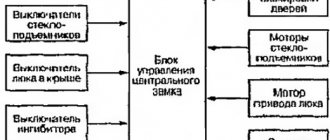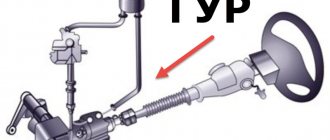Determining the density of a liquid and the specific gravity of diluted substances is possible using a hydrometer. Its operating principle is based on Archimedes' law. This property has made it possible to find widespread use of the device in various spheres of human activity. For example, car enthusiasts can use a hydrometer to check the density of electrolyte and antifreeze. In everyday life, this device can measure the strength of alcoholic beverages, the fat content of milk, the salinity of the solution, and the concentration of sugar. These devices differ only in the weight of the weight and the scale.
Principle of operation
The operating principle of the hydrometer is based on the hydrostatic law. According to it, the buoyant force acting on a submerged body is equal to the weight of the displaced fluid. That is, the volume of a body located in a liquid is equal to the volume that it can displace. Since different types of substances have different densities, the device immersed in them will sink to a certain depth, which corresponds to a certain density.
Measuring density with a hydrometer involves immersing it in the substance being measured and waiting for the end of the equilibration process. After equilibrium appears, the device floats freely, and reading data from the scale will not be a problem. How to use a hydrometer becomes clear from the figure below.
The process of measuring the density of a liquid using a hydrometer
Conductor Quantity Estimation
After charging is completed, the battery must be kept at rest for at least 6 hours . The condition is mandatory, since after exposure to current the density of the electrolyte remains increased; after “rest”, the sulfuric acid solution gives more reliable indicators.
Before checking the electrolyte in the battery, it is necessary to take a sample from the battery jar in an amount so that the hydrometer floats freely in the liquid .
Normally, the electrolyte density ranges from 1.24 kg/dm 3 to 1.29 kg/dm 3. If the obtained measurement result is below the norm, then adding fresh solution can improve the situation. The method of finding out how to correctly check the density of the electrolyte in the battery, with subsequent actions, must be repeated with each battery jar once every 3 months. According to visual assessment, the liquid should be transparent and have a high degree of purity.
Unpurified sulfuric acid can cause the battery to self-charge faster. Distilled water will also help ensure a normal electrolyte level; increased levels of the solution reduce the service life of the battery.
On the hydrometer scale, green stripes indicate the level of permissible density of the solution. With digital values marked between the upper and lower limits of the liquid, the indicator is considered normal; no electrolyte needs to be added.
When reading the hydrometer readings, you must remember that it is necessary to measure the acid concentration adjusted for the climate zone, since there are individual density values.
If the electrolyte density drops to a critical level, then no measures other than checking the battery density at home with the addition of battery acid will help correct the situation. You can check the electrolyte in the battery in the previously described way after adding each portion of acid. If you cannot get the desired result, it is best to simply replace the fluid completely.
The replacement method is carried out after pumping out the solution. The lids of the cans and the ventilation valves of the battery are tightly closed, the battery is laid on its side. Holes are made in each jar with a 3.5 mm drill, and the remaining liquid is drained. Empty jars are thoroughly washed with water, checked for the presence of sediment, the holes are sealed with acid-resistant plastic, and a fresh solution is poured in with a slightly higher density recommended for a particular climate zone.
Before putting the device into operation, it is recommended to measure the electrolyte concentration again.
Device types
All hydrometers according to the measurement principle are divided into two types:
- with constant mass, called densimeters;
- with constant volume.
The scale of a constant mass hydrometer can be graduated:
- density units;
- percentage of volume concentration of substances;
- percent of the mass content of impurities.
The densimeter consists of a glass flask made in the form of a float. At the bottom of the hull there is ballast with a certain weight. The upper part of the hydrometer is usually narrowed. It contains a fixed scale. For convenience, determining density with a hydrometer uses a built-in thermometer. Waiting for balance may take 3-4 minutes.
GOST 18481 classifies the purpose of hydrometers. According to the standard, the following types of devices are distinguished:
- hydrometer for petroleum products, helping to test oil, gasoline and other types of fuel;
- lactometers that allow you to find out the characteristics of milk;
- hydrometer for electrolyte, used to test batteries;
- alcohol densimeter, which determines the strength of alcohol;
- to check the density of urine used for medical and laboratory research;
- general purpose device, for example, hydrometer AON 1;
- saccharometers, determine the concentration of sugar-containing liquid;
- salt meters that help control water hardness.
Example of a lactometer
In the case of constant volume hydrometers, there is no scale. A ring mark is used instead. The measurement process occurs by selecting weights placed in the device plate. According to the instructions, after determining the weight of the weights, the density of the liquid is calculated.
Important information for car enthusiasts
Also, unless absolutely necessary, you should not replace the electrolyte completely. If the acid must be diluted with water, then it should be remembered that the density of liquids differs. For this reason, the acid is poured into the water in a thin stream with constant stirring.
Read also: Lathe spindle taper
Handling the power source must be as careful as possible; the battery must not be turned upside down due to the possible occurrence of a short circuit during operation. Before screwing the lids on the jars, you must follow the recommendation of experts on how to check the density of the battery with a hydrometer before operating the unit.
Hydrometer parameters
Regardless of the type of hydrometer according to GOST, all devices have the following parameters:
- range of readings characterizing the lower and upper limits;
- error limits that determine how much a hydrometer measurement can differ from the true value as much as possible;
- scale accuracy and bit depth, showing the discreteness of the received data;
- the presence of additions, for example, a thermometer.
To simplify measurements, the battery hydrometer has a hollow tube and a suction bulb, which allows you to measure the density of the electrolyte without draining it from the battery.
Preparing a place to check the density of the battery
Before checking the battery density, you need to decide on the place where all procedures will be carried out. This is not as easy to do as it might seem. Before checking the battery density with a hydrometer, you will need to carry out the entire preparatory maintenance cycle:
- cleaning the battery;
- checking and correcting the electrolyte level;
- full charge.
Only after this will it be possible to proceed directly to checking the density. Such “difficulties” are necessary, because if you check the density of the electrolyte in the battery immediately after removing it from the car, the results will be far from reality. And there are several reasons for this. For example, inappropriate electrolyte levels. In addition, the density of a charged battery is always higher, and this value is taken as the norm.
As for the room itself, before you check the battery density at home, it is necessary that it meets the following requirements:
- be equipped with excellent supply and exhaust ventilation;
- be safe in terms of fire safety;
- have a reliable power supply system.
Alcohol meter
The asp hydrometer has found wide application for determining the strength of alcohol-containing drinks both in everyday life and in production. When using an alcoholometer, the accuracy of measurements depends on the content of impurities. The body is usually made of glass, but metal options are possible.
To determine the proportion of alcohol in a liquid, it is necessary to lower the alcohol hydrometer into the container with the experimental substance. It is necessary to ensure that the Asp Hydrometer does not come into contact with the walls and bottom, otherwise the accuracy of determining the strength will be low. The recommended ambient temperature is 20°C. A household hydrometer-alcohol meter determines the strength in degrees from 0 to 95% alcohol in water.
The asp hydrometer has the appearance shown in the figure below.
Household alcohol meter
The asp hydrometer has possible variations:
- compact hydrometer for alcohol, allowing you to take measurements in a glass;
- vinometer, which determines the amount of sugar in alcohol during the fermentation process;
- a hydrometer for alcohol, the weight of which is adjusted for a specific alcoholic drink, taking into account impurities.
The household hydrometer asp does not have high accuracy and is used extremely rarely in laboratory measurements.
How to use a hydrometer and why is it needed?
The hydrometer works based on Archimedes' principle. It is used to find out the density of any liquids. Depending on what material is being tested, a corresponding scale is applied inside the device. For the car owner, the main thing is to understand the readings of the scale responsible for the density of antifreeze and electrolyte. These two liquids have different densities, so they need different scales for measurement.
Example of a hydrometer with three scales
The densities of battery electrolyte and antifreeze are measured in g/cm³, so most often the scale is calibrated in these units. But sometimes devices can also be marked in kg/m³. Also, in some devices, the scale for antifreeze can be immediately marked in degrees Celsius, which indicate the freezing point of the liquid. If not, you need to use the table of temperature versus density, which you will find below in the corresponding section.
The hydrometer itself consists of a thin glass or plastic tube, sealed on both sides, and with a graduated scale inside. One end of the tube is shaped like a ball or bulb and contains a load of small metal shot. The weight causes the device to float vertically in the liquid like a float.
To make it easier to work with hazardous liquids, the best automotive hydrometers have a safer design. They have a second cylinder (glass or plastic), which acts as a flask - using a bulb, the liquid to be measured is drawn into it, and inside it is the hydrometer itself. As a result, the hydrometer floats inside the flask without touching its walls and measures the density of the substance. The bulb also allows you to safely return the collected fluid back to the battery or antifreeze expansion tank. This design also allows you to measure the density of liquids in which it is technically difficult to place a hydrometer.
There are digital hydrometers, but they are rarely used by car owners because they are many times more expensive than analog instruments.
Hydrometer for petroleum products
The ANT hydrometer is a highly specialized device. It is used in the trading of petroleum products such as gasoline and in the oil industry. It is intended to assist in the control, certification and research of petroleum products.
The Ant hydrometer can be operated at temperatures up to 45-50°C. The optimal temperature range is from 20 to 22°C. When checking the density, the Ant hydrometer is placed in a container with liquid. If the walls and bottom are not touched, the readings are read.
The sizes of the devices are different. So, for example, the ant 2 hydrometer has a length of 300 mm, which is 200 mm shorter than ant 1. This allows you to measure the density of fuel in a smaller tank volume. In this case, the measurement accuracy is halved. This is due to the increase in the scale division price.
Hydrometers ANT
Instructions on how to check a car battery
| Without a battery, it is impossible to start the engine; it is also used when the generator cannot cope with the heavy load on the on-board network. In order for the car not to fail, you should monitor the condition of the battery, and do you know how to check a car battery? |
Visual check of the car battery
How to check a battery with a multimeter (tester)
Using a multimeter, you can measure the voltage at the battery terminals. It is best to take measurements after parking overnight, before starting the car. We set the parameters of the multimeter (according to the instructions for the device) to measure direct voltage (in the photo - this is DCV - 20), and the wires into the sockets (black - COM, red into the socket for the positive polarity probe):
After this we take measurements:
Saccharometer
The ac 3 hydrometer shown in the figure below is used to determine the proportion of sugar in sugar-containing liquids. It gained the greatest popularity in the food industry.
Household saccharometer AS-3
The hydrometer has found application in determining the ripeness of fruits and vegetables. This question is relevant when producing juice from them. When the fruit ripens, the starch it contains turns into sugar. Testing with a saccharometer shows whether the fruit is ready for juice production.
What is a hydrometer for and how to use it
It's no secret that any car requires care and timely maintenance. You should check the functionality of components and parts in a timely manner, and, if necessary, repair or replace defective ones. The same applies to the battery, because it is one of the most important parts of the car, without which it will not be possible to even start the engine.
For long and uninterrupted operation of the battery, it should also be maintained. Any motorist knows that the battery inside is filled with electrolyte, which plays a very important role in it. To maintain normal battery operation, its density must correspond to the norm. And to know the density, you need to be able to use a battery hydrometer.
